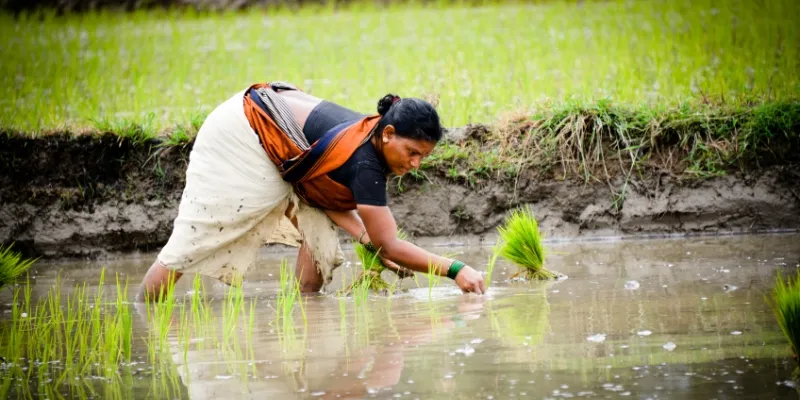Agritech investments saw 4X growth in 21-22: Kalaari Capital report
Emerging sectors like precision agritech and aquaculture accounted for nearly 23 percent of tidal venture funding raised in 2021-22.
A new report from revealed that the sector saw a 4X growth in total investment for 2021-22. Titled Agritech: India’s Sunrise Sector, it said that the average funding at the seed stage doubled to $2 million and while the average Series A cheque size was estimated at $8 million.
The total funding raised by the sector amounts to $1.6 billion in the same time period. The report added that institutional funding in agritech has seen a 9X increase over the past five years and the sector represents a $24 billion opportunity for startups over the next four years.
The key drivers of this growth are increased penetration of mobile internet, innovative founders, technology solutions, the adoption of newer supply chains and the government’s focus on farm-reforms
However, this sector is still in its infancy with just 1.5% penetration. At present, India has over 1,500 active agritech startups of which 120 have raised capital.
Change in Tide
According to the report, “2021 was a watershed year for Indian agritech investment. Many new global and Indian investors pumped significant amounts of capital into growth stage companies, a sign that Indian agritech is maturing."
It added that late-stage startups accounted for 72% of the funding, whereas the early stage accounted for 28%.
Input linkages attracted the largest share—close to 29%—of the funding, followed closely by output linkages at 18%. This was the first time in five years that the inputs' space received more funding as output linkages are traditionally a favourite of investors.
While managed farming received 21% while emerging sectors (precision agriculture, aquaculture) attracted close to 24% of total funding.
Opportunities in Input
Agri inputs, a $10 billion industry in India, encompasses five categories—fertilisers, animal feed, high-quality seeds, crop protection chemicals, and agricultural tools like sprayers.
There are many layers of challenges in this space but the most fundamental one is improving the affordability and accessibility of high-quality inputs. One of the chief issues, as per the report, is the long and fragmented supply chain.

(Representative image)
Opportunities in output
Noting that output linkages are a "complex problem", the report added that while many solutions have been tried out none have had much luck in building a replicable business model.
“We believe part of the solution lies in creating technologies to predict demand from different sources, like mandis, HoReCa, local markets, etc.”
Lack of predictability means farmers fail to harvest at the right time. This, in turn, leads to negative or no ROI (return on investment). Among key opportunities are solutions that enable farmers to know the real-time prices of produce and options to sell across different marketplaces, integrated with logistics and storage.
In addition, building a scalable supply chain from farmgate to markets is one of the regions where large opportunities exist as collection and fulfilment centres are expensive to maintain, leading to unit economics bleeding red.
Transport and pickup from the farmgate also remain an untapped opportunity as farmers need to travel 50 km or more in many cases to local markets to sell produce.
The other large opportunity is in creating an e-marketplace—digitise and ease the workflow of mandi-commission agents and APMCs.
Edited by Saheli Sen Gupta









